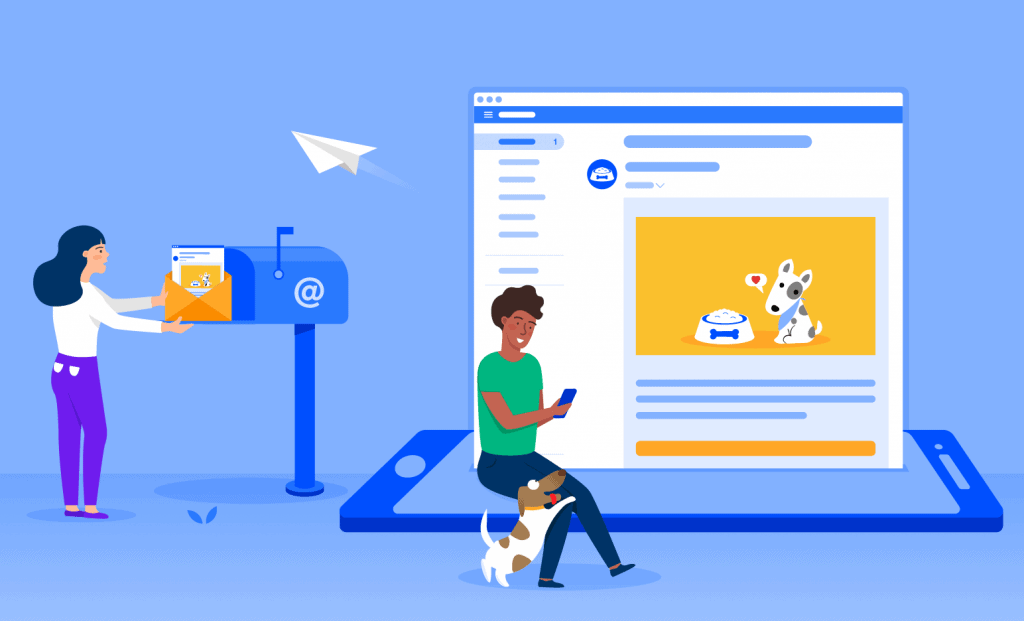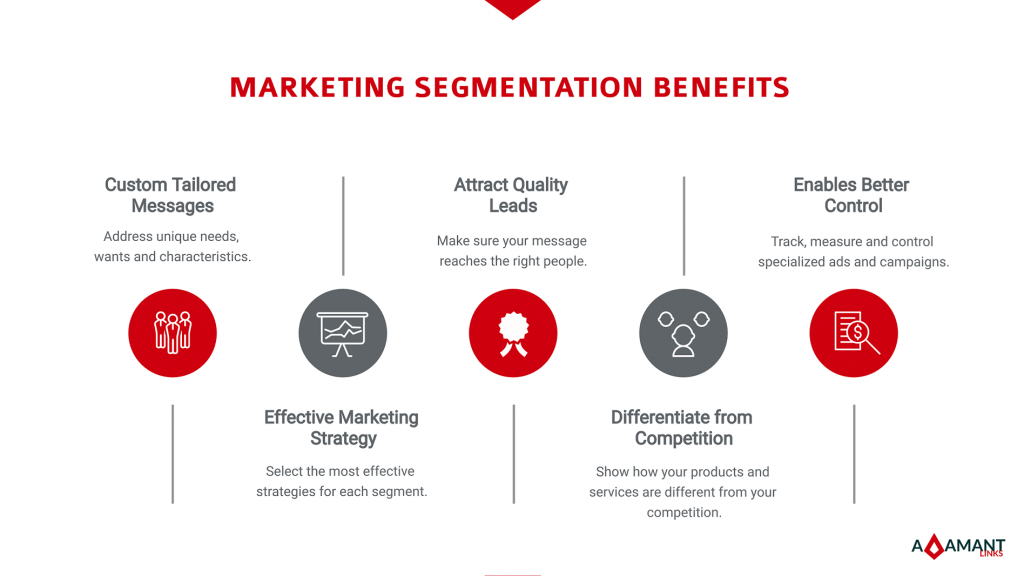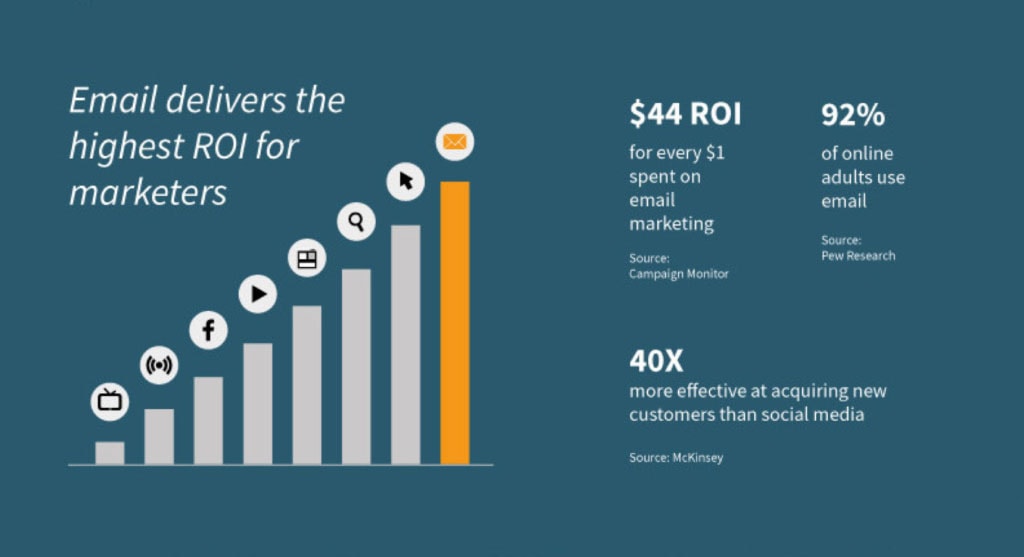Email Marketing: How to Target the Right People for Improved ROI
Email marketing is one of the most popular strategies for gaining leads and boosting profits. Tried, tested, and trusted by professional marketers worldwide, it’s a must-have strategy for any business! It also comes with minimal costs, making it an excellent choice for startups and small companies.
If you’re thinking about creating an email marketing strategy, one of the most important factors is getting your audience right. Targeted marketing is the cornerstone of a successful brand, and we’ve got everything you need to know about it right here.
One of the most important aspects of email marketing is identifying the right people to send your emails to. There are many ways to target your emails to the right people, and in this article, we’ll cover some of the most effective and affordable ways to target your emails.
Table of Contents
Why Do You Need to Target the Right People?

Almost 90% of consumers remain loyal to brands that share their values. They’ll choose them over competitors, pay a higher price point for their products/services, and are more likely to recommend them to their friends. In other words, they’re the bread and butter of your business! These are the people you want in your target audience.
By sharing your marketing with the right people, you’re far more likely to secure these all-important, high-quality customers. You’ll also be sharing your content with an audience more likely to be interested, meaning that click-through rates will be higher, and you’ll see fewer unsubscribes for every email you send.
A targeted audience is more likely to connect with you for the long term. We all know it costs a lot more to acquire a new customer than to keep one you already have, so finding those people you can build a relationship with is essential to business survival.
Sending your emails to a targeted audience saves you time – and money! If you don’t have a small demographic of people to email, you will be wasting your marketing on people who aren’t interested and won’t listen. In business, no one has time for that.
Target Audiences Are Vital to Email Marketing Success
By being specific about your demographics and whom you message, you can:
- Build stronger connections
- Gain customer loyalty
- Customise your content to suit your audience
- Meet the expectations of your audience
- Reduce the number of spam emails you send
You’ll send your marketing to people who want to receive it, which is a must if you want to increase your return on investment (ROI). So, how do you target the right people? Here are some tips to help.
Know Your Target Audience

Before you even think about email marketing, you need to know your target audience. These people need or want your product/service, even if they don’t know it yet. A smart proposition tool will help you discover your target audience through in-depth competitor research and market analysis. Write up a clear, concise customer profile that encapsulates your market and keep that in mind when putting together your marketing.
If you are an expert in your niche and know precisely how your product works, you are much better off than someone writing to everyone. It doesn’t mean that you can’t write to everyone; you need to focus on who will read your emails and who will pay attention to them.
If your customers are like your family, you already know who they are. They might not be your family members, but they share the exact basic needs and concerns. And if they don’t know you or aren’t familiar with your company, that’s where your targeted audience comes in.
Targeted audiences are people who are most likely to buy your product or engage with your company. It could be people who have already expressed interest in buying or have a shared interest that could eventually translate into purchasing.
You can define your target audience in various ways. For instance, you could be targeting individuals with interest in buying, you could be targeting families who want to get ahead, or you could be targeting a specific demographic. The key is finding a segment of your market that aligns with your product or service.
How do you know which is the right audience?
The easiest way is to start by identifying a few key characteristics. Then, you can use the following questions to narrow down your target audience:
- What’s the age range of your ideal customer?
- How often do they shop or interact with your company online or through social media?
- Do they have an existing relationship with you?
- What’s your product or service like?
- Is there a unique benefit or benefit set to your product or service?
- Do they have any particular challenges or needs?
- What’s their financial situation?
- Is there a particular industry that your audience is in?
Once you have identified the right audience, you can start thinking about what email content is relevant to your audience and what message format works best.
Segment Your Audience into Smaller Groups

Sending mass emails out to your entire target audience isn’t the best idea. Segmenting your contacts into smaller groups would be best to boost your ROI. Companies who segment can see a whopping 760% increase in revenue, making this a vital step if you want to boost profits!
Segmenting involves breaking down your audience into different categories, which could be based on:
- Interests
- Budgets
- Location
- Gender
- Age
- Occupation
- Previous purchases
You can then refine your marketing messaging to suit these specific groups. Match your content to meet their needs and desires to create personalised content that boosts engagement and encourages connections.
Focus on Opt-In Instead of Opt-Out
If you’re looking for email leads, focus on increasing the number of people opting in to receive your marketing. Anyone who opts in will be far more receptive and engaged, making it a better investment of your time to market to them.
Cold-emailing (emailing random addresses) can damage your reputation. It annoys recipients, makes your brand look less trustworthy, and can lead to your email address being added to spam lists. Focus on building a list of high-quality prospects who have opted in and watch your conversions grow.
Grow Your Email List Through High-Quality Content

Incentives, like discounts and free downloads, can be a great way to add to your email list. But, these people often sign up because they want the discount, not to hear more from you. A more long-term strategy to gain high-quality contacts is by producing valuable content.
A blog, for example, can earn you leads. By posting informative, helpful content, you show the value of your brand and give readers a sense of what’s on offer if they follow you. Finish the blog with an enticing call to action to sign up for your mailing list so that you can send more content directly to their inbox.
Most marketers consider opt-in to be the gold standard, and it is, but opt-out is the holy grail of email marketing. Unfortunately, there’s a big gap between what marketers think they need to do and what customers want. For example, in one survey, respondents said they’d be open to receiving promotional emails from a brand if the emails contained information that was useful to them.
But when asked whether they would opt-in, the number dropped to less than 20%. The reason? The survey respondents said the emails were too spammy and didn’t contain any value.
Opt-out emails will not make any headway until there’s a shift in mindset among the market. We believe that the way to get there is by having brands make their first, second and even third efforts count.
We talk a lot about the power of opt-in and how to take advantage of it, but marketers often fail to think about the other side of the coin — the power of opt-out. There are few things customers like more than being able to say no to messages they don’t want.
For example, a survey of 3,000 people found that 85% of respondents say they’d instead give their consent to receive an email than give their consent to be bothered. That’s a compelling and positive finding. The problem is that we rarely see opt-out.
Most people who agree to receive emails from marketers don’t realise that they’re opting in. For example, in one recent study, more than half of respondents thought they had agreed to receive email updates and discounts from their favourite retailers. Only 8% said they’d given consent.
We’re not saying that every single message needs to be opt-out. We’re just saying that you should start thinking more about opt-out than opt-in.
Why Is Opt-Out Better Than Opt-In?
There are two reasons why opt-out is better than opt-in:
First, it lets people turn off the email flow. While opt-in is excellent because you have permission to send, it is hard to control the flow. This is especially true for newsletters.
However, if each subscriber permits you to send the newsletter, you’ve just added 10,000 more subscribers. If you have more than 5 million subscribers, that’s a significant amount of new subscribers!
But with an opt-out, there’s a good chance that many of your subscribers won’t see the newsletter. This is because the average person tends to check their email weekly.
This means that the average person may only see a fraction of your newsletters, making it easier to turn them off or delete them.
Second, it gives you a better understanding of your audience.
The power of opt-out is that it allows you to determine who’s interested in your content. If your email list is opt-out, you know that only a tiny percentage will engage with your content.
However, if your email list is opt-in, you don’t know whether they’re engaged or not. For example, the earlier study found that while only 8% said they’d opted in, more than 70% said they’d read or skimmed the emails. So, a large percentage of your subscribers are actively participating in your email program without giving their consent.
Customise Your Content to Suit Your Audience

Once you have a contact list of high-quality leads that you’ve segmented into smaller groups, it’s time to target them. Customise your emails based on the audience you’re talking to. For example, a group with a smaller budget may be more interested in hearing about sales or products you have for £10 or less. Meanwhile, a group that has previously purchased a printer will be more likely to be interested in emails advertising printer ink and paper.
Targeted messaging is all about knowing what your audience will be interested in. Put yourself in their shoes and ask what topics you’d be most inclined to read about if you were them. This applies to email design and tone of voice, too.
Why is Customisation Important?
Customisation is a crucial part of any business because it helps you target your customers’ interests and engages your audience, helping you create a relationship and get them to convert to customers.
It’s the difference between sending your emails to the wrong people and having them unsubscribe. The former can significantly impact your business and cause significant financial loss.
If you don’t know what your customer wants, you’re missing out on sales, leads, and opportunities to turn them into your customers.
There are three main reasons you need to customise your content for email marketing:
- You’re building a relationship with your audience, and knowing your audience helps you engage with them.
- You’re providing content that resonates with your audience, ensuring that they read, respond and share.
- You’re delivering the right message at the right time, to the right person, and with the correct information.
Building Relationships with Your Customers
The more engaged your customers are, the more likely they trust you. By communicating in relevant ways and showing you understand and care about their needs, you’re more likely to build a loyal following.
If you send generic emails that are the same for all of your subscribers, it will be challenging to establish a relationship with your customers.
When you personalise your email messages, you’re building a relationship by tailoring your content to match your customers’ interests, making them more likely to read and respond to your emails.
This also shows that you’re interested in their needs and what’s important to them and that you’re trying to reach out to them on their terms rather than expecting them to reach out to you.
Engaging Your Audience
Engagement isn’t only suitable for the person you’re communicating with, but it’s also good for your business. Engaged customers are more likely to buy, recommend and refer your business to others.
People who aren’t engaged may not read your emails or may unsubscribe after a few days or weeks.
Engaged customers are also more likely to take action because they have a solid connection to you and your business and are connected with the specific content you’ve shared.
If you want to generate more leads, convert more customers and increase your sales, engaging your audience is one of the best ways to do that.
Getting Your Message Right at the Right Time
Customising your content for your audience helps you reach the right people at the right time.
Email is the most common way for people to communicate, and it’s proven to be a powerful medium for getting your message out there, so you need to ensure your content is suitable for the people you’re trying to reach.
If you’re sending emails that are too generic, they may not resonate with your audience or get lost in the sea of other emails in their inbox.
On the other hand, if you’re sending personalised, tailored, and relevant messages, your emails will stand out from the rest and have a higher chance of being read, responded to and shared.
Final Words
Email marketing, like any other marketing method, is complex. To create a winning strategy, you need to take the time to understand your audience and target the right demographics with content they’ll want to engage with. These tips should help you begin your strategy, but be sure to keep researching and building your knowledge. When it comes to email marketing, you can never know too much!
That said, email marketing isn’t for everyone. It takes much work, and many people aren’t willing to put in the effort to get results.
But if you’re willing to invest in email marketing, you can reap the benefits of a well-targeted list of subscribers. And if you’re interested in learning more about it, I recommend checking out this article!
Sign up below to get my free email marketing guide!
